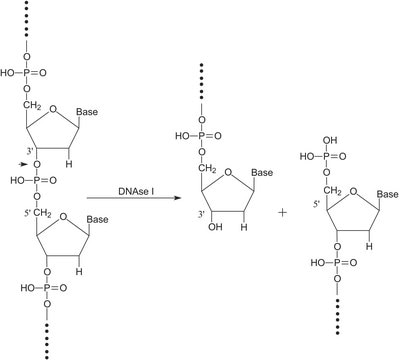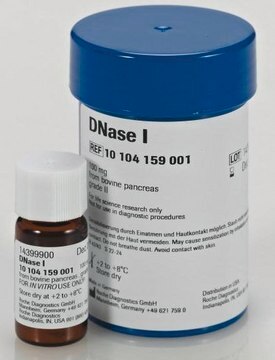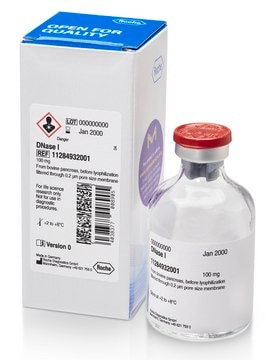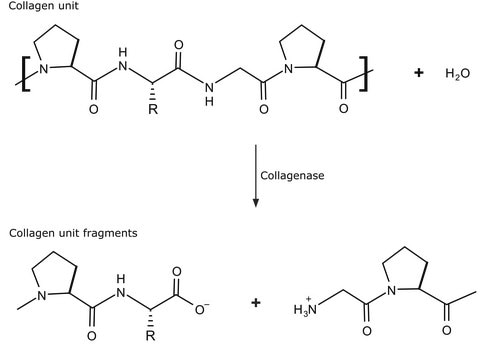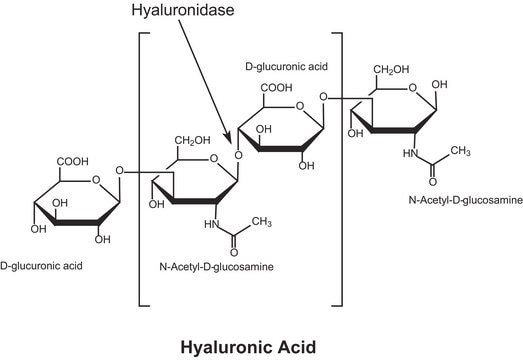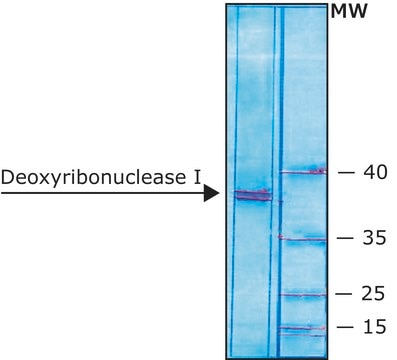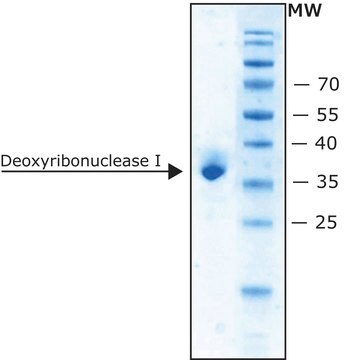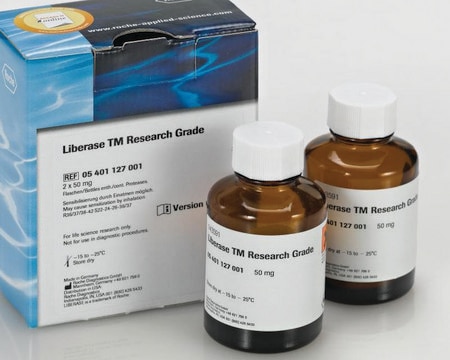D4263
Deoxyribonuclease I from bovine pancreas
Standardized vial containing 2,000 Kunitz units of DNase I (D4527), vial of ≥0.25 mg total protein
Synonym(s):
DNase I, Deoxyribonucleate 5′-oligonucleotido-hydrolase
About This Item
Recommended Products
biological source
bovine pancreas
Quality Level
form
powder
specific activity
1700—2300 U/vial
mol wt
~31 kDa
purified by
chromatography
packaging
vial of ≥0.25 mg total protein
technique(s)
DNA extraction: suitable
solubility
0.15 M NaCl: soluble 5.0 mg/mL, clear
suitability
suitable for molecular biology
application(s)
diagnostic assay manufacturing
diagnostic assay manufacturing
storage temp.
−20°C
Looking for similar products? Visit Product Comparison Guide
Related Categories
Application
Biochem/physiol Actions
Features and Benefits
Versatile applications: This enzyme can be used to nick DNA, incorporate labeled bases into DNA, and isolate and molecularly characterize cancer stem cells in murine breast tumors. It is also useful in comparative studies of deoxyribonuclease isolated from bovine, ovine, and porcine pancreas.
Stable: The enzyme remains active for up to five hours at 60 °C between pH 5 and 7, and can be stored for up to a week at −20 °C with minimal loss of activity. This stability makes it a cost-effective and convenient option.
Unit Definition
Preparation Note
Analysis Note
inhibitor
signalword
Danger
hcodes
pcodes
Hazard Classifications
Resp. Sens. 1
Storage Class
11 - Combustible Solids
wgk_germany
WGK 3
flash_point_f
Not applicable
flash_point_c
Not applicable
ppe
Eyeshields, Gloves, type N95 (US)
Certificates of Analysis (COA)
Search for Certificates of Analysis (COA) by entering the products Lot/Batch Number. Lot and Batch Numbers can be found on a product’s label following the words ‘Lot’ or ‘Batch’.
Already Own This Product?
Find documentation for the products that you have recently purchased in the Document Library.
Customers Also Viewed
Our team of scientists has experience in all areas of research including Life Science, Material Science, Chemical Synthesis, Chromatography, Analytical and many others.
Contact Technical Service